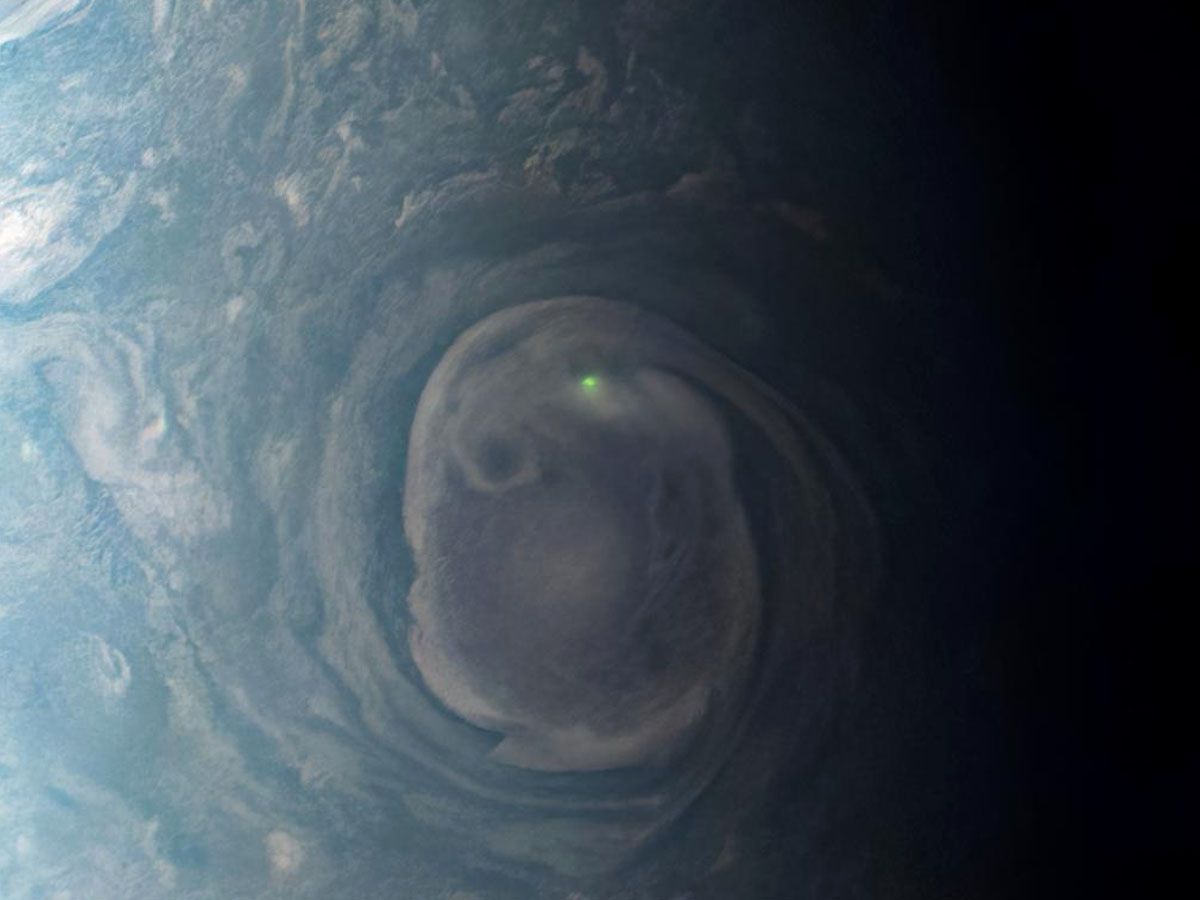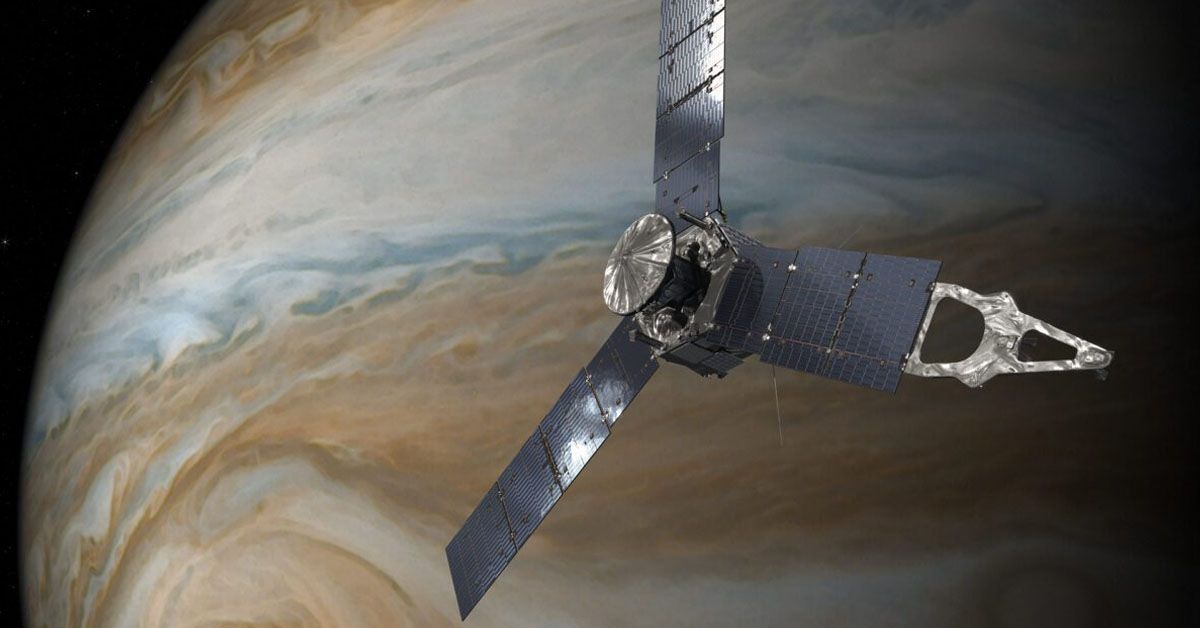NASA's spacecraft, Juno, has achieved an extraordinary feat, capturing an image that presents a glimpse into the mystifying weather phenomena on Jupiter. This celestial body, well-known for its colossal size and turbulent storms, hides many secrets beneath its thick, gaseous atmosphere.
One such secret was recently revealed, as Juno managed to snap a stunning picture of lightning amid a raging Jupiter storm. Imagine, a bolt of lightning not emerging from a terrestrial storm cloud, but from a swirling vortex on Jupiter, a vortex filled with an ammonia-water solution rather than our familiar water vapor clouds!
But what might this spectacular revelation mean for our understanding of this giant planet's weather systems?
A Glimpse of Lightning in Jupiter's Swirling Vortex
The picture captured by Juno reveals a bolt of lightning brilliantly glowing amidst a tumultuous vortex on Jupiter. It's not just a flash of light, but rather a vibrant display of electrical discharge occurring in the chaotic atmosphere of this gigantic planet.
Encased within Jupiter's infamous swirling storms, this lightning bolt stands as a testament to the unpredictable and fascinating weather phenomena that occur millions of miles away from our Earth.
Storms on Earth and Jupiter may share the presence of lightning, but the resemblance ends there. Here on Earth, storms are formed by water vapor clouds. Lightning, our familiar electrical spectacle, is born from these water-laden clouds, particularly in the warm, tropical areas near the equator.

However, Jupiter dances to a different beat. Its storms, gargantuan in scale, are not made of water vapor clouds, but of an ammonia-water solution. This brew, far from the composition of Earth's storms, is the cradle of Jovian lightning.
While we're accustomed to lightning crackling across our equatorial skies, on Jupiter, this electric display is most commonly observed in the clouds near the planet's poles. This striking contrast underscores the variety of weather systems beyond our world and the unique conditions that give rise to such mesmerizing phenomena as the lightning caught in Juno's gaze.
Processing and Release of the Image
Capturing the image was only the beginning of Juno's monumental achievement. The raw data from Juno's onboard camera, JunoCam, needed meticulous processing to transform it into the stunning image we now marvel at.
This crucial task was undertaken by NASA's Jet Propulsion Laboratory, an essential hub of space exploration and innovation. However, it wasn't only the scientists at NASA who lent their expertise to this project.
A significant contribution came from an unexpected source - Kevin M. Gill, a citizen scientist. His invaluable role in processing the image further underscores the collaborative spirit of space exploration, proving that you don't need to be a NASA employee to contribute to our understanding of the universe.
The Position of Juno
The breathtaking image owes its existence not only to the camera's capabilities but also to Juno's position during the 31st flyby.
As Juno approached Jupiter, it found itself approximately 19,900 miles (around 32,000 kilometers) above the planet's cloud tops. From this vantage point, with a latitude of roughly 78 degrees, Juno was ideally placed to capture the lightning spectacle.
While maintaining a safe distance from the stormy chaos below, Juno was close enough to get an extraordinary view of the lightning bolt aglow in the ammonia-water solution vortex.
This intricate dance between Juno's position and the storm led to the capture of an image that provides an unprecedented insight into Jupiter's turbulent weather patterns.
Upcoming Mission to Europa
NASA, riding on the wings of its successful ventures like the Juno mission, has set its sights on another celestial body - Jupiter's moon Europa. Believed to host a briny ocean beneath its icy surface, Europa beckons as a new frontier in our quest to understand the universe.
The planned mission to this moon aims to probe its potential ocean and study its surface in more detail. Could there be life existing in the subsurface waters of this distant moon?
The prospect of answering such tantalizing questions is both exciting and formidable, as it has the potential to revolutionize our understanding of life beyond Earth.
But while NASA's gaze turns towards Europa, the Juno spacecraft continues its mission around Jupiter. In its future orbits, Juno will venture close to Jupiter's night side.
These upcoming trajectories promise a treasure trove of opportunities to further study Jupiter's electrifying weather phenomena. The prospects of additional lightning observations are particularly high during these night-side flybys.
Sources: nasa.gov












